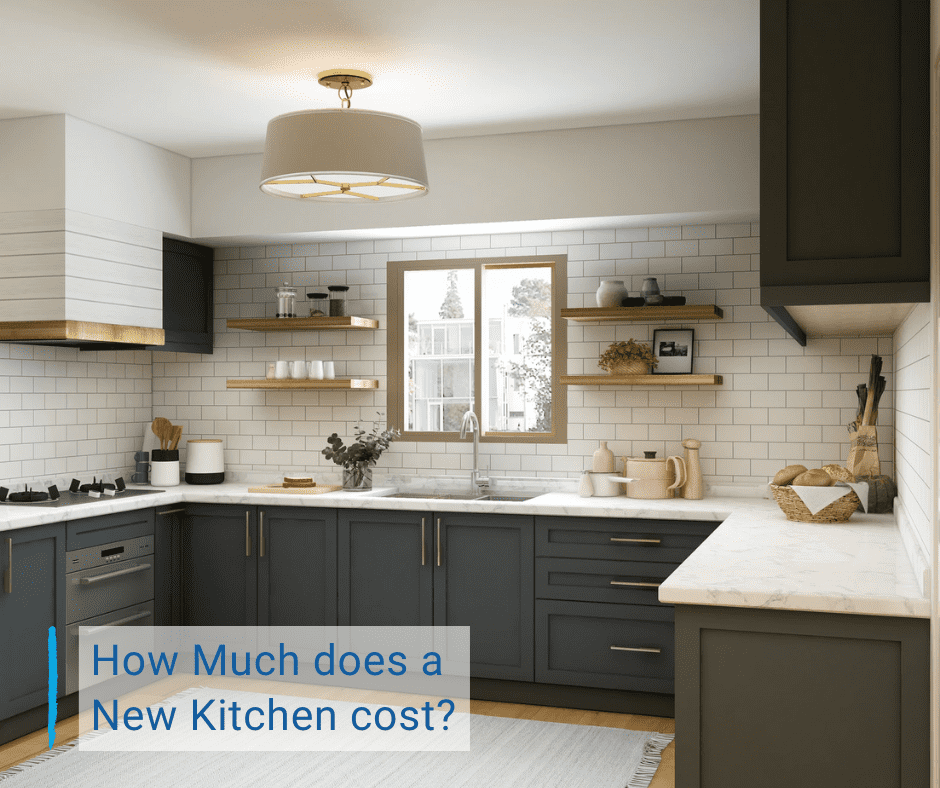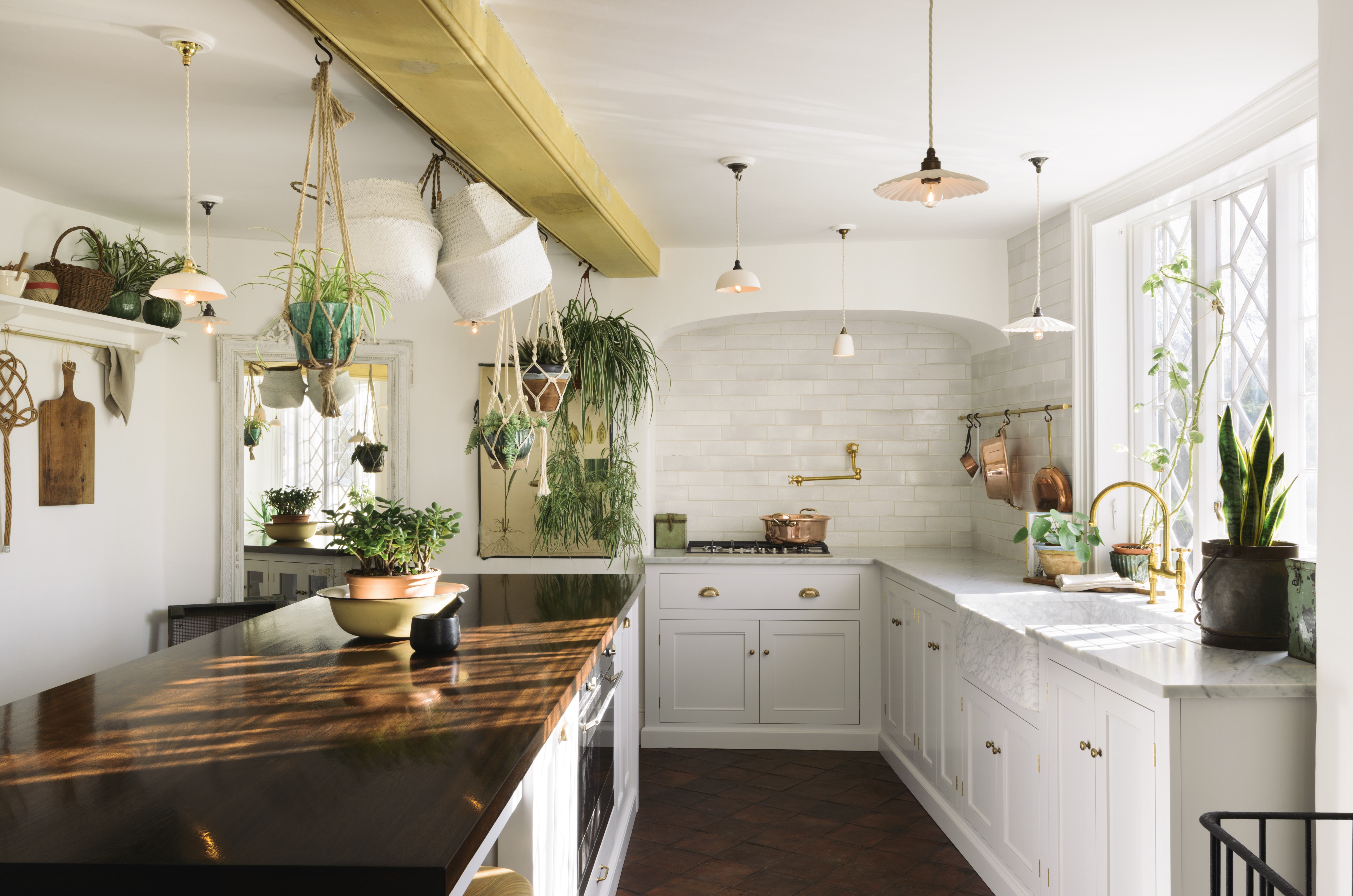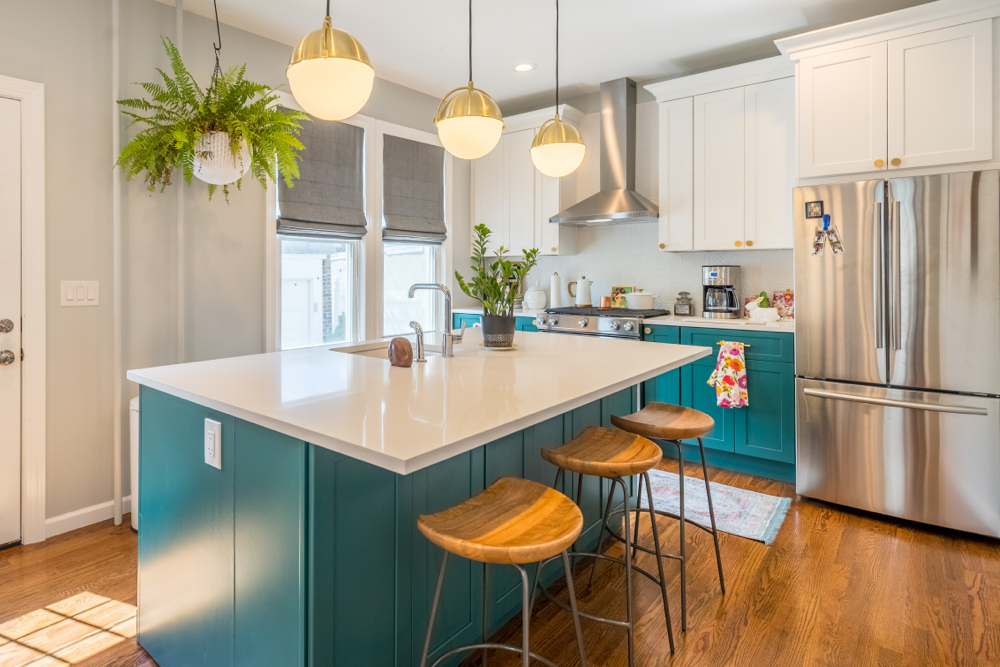How Much Does It Cost for a New Kitchen: Budget Breakdown
The cost of a new kitchen can vary widely. It depends on many factors.
Are you dreaming of a brand-new kitchen? You might wonder about the cost involved. The price can range from a few thousand to tens of thousands of dollars. Factors like the size of your kitchen, the materials you choose, and the quality of appliances play a big role.
Labor costs and your location also affect the total expense. Understanding these elements will help you plan your budget. In this blog post, we will explore the different costs. This will help you get a clear idea of what to expect for your new kitchen project.
Planning Your Budget
Revamping your kitchen can be an exciting yet challenging endeavor. One of the most crucial steps is planning your budget. Without a clear budget, it's easy to get lost in the sea of choices and end up spending way more than you intended. So, how do you ensure your dream kitchen doesn't turn into a financial nightmare? Here's a guide to help you navigate through the process.
Setting Priorities
First things first, you need to set your priorities. Ask yourself, what are the must-haves in your new kitchen? Is it a high-end stove, luxurious countertops, or perhaps custom cabinetry? By identifying what’s most important to you, you can allocate your budget accordingly.
Consider making a list of your priorities:
- Essential appliances (e.g., refrigerator, oven, dishwasher)
- Countertop materials (e.g., granite, quartz)
- Cabinetry (custom vs. stock)
- Flooring options (hardwood, tiles, etc.)
- Lighting fixtures
Once you have your list, rank these items in order of importance. This will help you make informed decisions when you start shopping around.
Estimating Costs
Now that you have your priorities straight, it's time to estimate the costs. The cost of a new kitchen can vary widely based on factors such as the size of the space, the quality of materials, and the extent of the renovation.
Here’s a rough breakdown to give you an idea:
| Item | Estimated Cost |
|---|---|
| Cabinets | $5,000 - $15,000 |
| Countertops | $2,000 - $5,000 |
| Appliances | $3,000 - $8,000 |
| Flooring | $1,500 - $4,500 |
| Lighting | $500 - $2,000 |
Keep in mind these are just ballpark figures. The actual cost can be higher or lower based on your specific choices and the region you live in.
To avoid surprises, always add a buffer of about 10-20% to your estimated budget. This extra cushion will cover any unexpected expenses that may arise during the renovation.
Planning your budget might seem like a daunting task, but with careful consideration and a bit of research, you can create a financial plan that aligns with your vision for the perfect kitchen. So, roll up your sleeves and get ready to transform your culinary space without breaking the bank!
Cabinets And Storage
Cabinets and storage are vital components of any kitchen remodel. They define the kitchen's style and provide essential space for organization. The cost of cabinets and storage can vary greatly based on several factors. The material choices and the decision between custom or pre-made options play significant roles.
Material Choices
The type of material you choose for your cabinets affects both price and durability. Solid wood cabinets are popular for their classic look and longevity. However, they can be expensive. Plywood is a more affordable option and still offers good durability. Medium-density fiberboard (MDF) is another choice. It's less costly but may not last as long.
Laminate cabinets are budget-friendly and come in various styles. Yet, they might not have the same longevity as wood. Metal cabinets are durable and give a modern look. They're more expensive and can show fingerprints and smudges easily.
Custom Vs. Pre-made
Custom cabinets are built to fit your kitchen’s exact dimensions. They offer more design options and higher quality. But they come at a higher cost. Custom cabinets can be a good investment if you plan to stay in your home long-term.
Pre-made cabinets, or stock cabinets, are mass-produced. They come in standard sizes and are less expensive. They offer fewer design choices but are easier on the budget. Semi-custom cabinets offer a middle ground. They provide some customization options without the high price of full custom work.
Countertops
When it comes to upgrading your kitchen, countertops play a major role. They are not just surfaces to prepare food; they add aesthetic value to your kitchen. But how much should you budget for new countertops? Let's dive into the details.
Material Options
Choosing the right material for your countertops can be tricky. Here are some popular options:
- Granite: Durable and heat-resistant, granite is a favorite. It can cost between $40 to $100 per square foot.
- Quartz: This engineered stone is non-porous and low-maintenance. Expect to pay around $50 to $120 per square foot.
- Laminate: A budget-friendly option, laminate costs about $10 to $40 per square foot. However, it may not last as long as natural stone.
- Marble: Luxurious but high-maintenance, marble ranges from $50 to $150 per square foot.
Installation Costs
Installation costs can vary depending on several factors. Here’s a breakdown:
| Material | Installation Cost per Square Foot |
|---|---|
| Granite | $20 - $30 |
| Quartz | $25 - $40 |
| Laminate | $10 - $20 |
| Marble | $30 - $50 |
Remember, these costs are just for installation. You also need to factor in the price of the material. And don't forget about any additional features like edge treatments or backsplashes, which can add to the overall cost.
So, what’s the takeaway? While countertops are a significant investment, they can transform your kitchen and add value to your home. Choose wisely, and you'll enjoy your new space for years to come.

Credit: superbath.co.uk
Appliances
When planning a new kitchen, one major expense is appliances. They are essential for daily tasks. The cost varies based on several factors. Let's explore some key points.
Energy Efficiency
Energy-efficient appliances can save money in the long run. They use less electricity and water. Look for appliances with the Energy Star label. These appliances meet strict efficiency guidelines. Though they cost more upfront, the savings on utility bills add up. They are also better for the environment.
Brand Comparisons
Different brands offer different price points and features. High-end brands like Bosch or Miele offer advanced features. They have sleek designs and long warranties. Mid-range brands like Samsung and LG provide good value. They offer many modern features at a lower price. Budget brands like Whirlpool or GE offer basic functionality. They are affordable and reliable. Consider your needs and budget when choosing a brand. Read reviews and compare features to find the best fit.
Flooring
When it comes to renovating your kitchen, flooring is a critical component that can significantly impact both the aesthetics and functionality of the space. The right flooring not only enhances the overall look but also ensures durability and ease of maintenance. Let's delve into some essential aspects of kitchen flooring, focusing on Durable Materials and Cost-Effective Options.
Durable Materials
In a bustling kitchen, durability is key. The floor must withstand spills, foot traffic, and the occasional dropped pot. Some of the most durable materials include:
- Ceramic Tiles: These are incredibly strong and resistant to water and stains. They come in various designs, making it easy to match your kitchen's style.
- Porcelain Tiles: Even more durable than ceramic, porcelain tiles are less porous, making them an excellent choice for kitchens.
- Natural Stone: Options like granite, slate, or marble not only look luxurious but are also long-lasting. However, they require more maintenance.
- Vinyl: High-quality vinyl flooring can mimic the look of wood or stone while being highly resistant to scratches and stains.
Choosing a durable material might seem like a hefty upfront investment, but it pays off in the long run by reducing the need for repairs or replacements.
Cost-effective Options
If you're on a budget, don't fret! There are plenty of cost-effective flooring options that don't compromise on style or quality. Here are some wallet-friendly alternatives:
- Laminate: This is a budget-friendly alternative to hardwood. It is easy to install, maintain, and comes in a variety of finishes.
- Linoleum: Made from natural materials, linoleum is eco-friendly and affordable. It also offers a variety of design options.
- Engineered Wood: Less expensive than solid hardwood, engineered wood provides the same classic look with added stability and moisture resistance.
- Peel-and-Stick Vinyl Tiles: These are perfect for a quick, DIY-friendly update. They are easy to install and come in numerous patterns.
Saving on flooring doesn’t mean skimping on quality. Many affordable options are designed to mimic more expensive materials, giving you the look you want without breaking the bank.
In summary, whether you prioritize durability or cost-effectiveness, there are plenty of kitchen flooring options to suit your needs. Remember, a little research and planning can go a long way in transforming your kitchen into a beautiful, functional space.

Credit: www.realhomes.com
Lighting
When planning the cost for a new kitchen, lighting often takes a backseat. However, it's an essential element that can significantly impact both functionality and ambiance. Let's shed some light on the importance of proper kitchen lighting and the types you might consider.
Ambient And Task Lighting
Lighting in your kitchen is not just about brightening up the space. There are different types of lighting to consider, each serving a unique purpose. Ambient lighting is the general lighting that fills the room. It ensures the entire space is well-lit and welcoming. Think ceiling fixtures or recessed lights that spread light evenly.
On the other hand, task lighting focuses on specific areas where activities like chopping vegetables or reading recipes occur. Under-cabinet lights or pendant lights over an island are perfect examples. Imagine trying to chop onions in a dimly lit corner - not ideal, right?
Energy-saving Solutions
Now, while we all love a well-lit kitchen, no one enjoys sky-high electric bills. This is where energy-saving solutions come into play. Switching to LED bulbs is a smart move. They use significantly less energy and last much longer than traditional bulbs.
Moreover, consider installing dimmers. They allow you to adjust the brightness according to your needs, saving energy and setting the right mood. Another tip? Use motion-sensor lights in areas like the pantry. They turn on only when needed, helping you cut down on unnecessary usage.
| Lighting Type | Cost Range | Benefits |
|---|---|---|
| Ambient Lighting | $50 - $200 | Overall room illumination |
| Task Lighting | $20 - $150 | Focused light for tasks |
| LED Bulbs | $5 - $20 per bulb | Energy-efficient, long-lasting |
In the grand scheme of things, investing in good kitchen lighting is worth every penny. It not only enhances the look and feel of your kitchen but also makes it a safer, more efficient space. So, as you budget for your new kitchen, don't let lighting be an afterthought. Brighten up your culinary adventures with the right lighting choices!
Plumbing And Fixtures
Plumbing and fixtures play a vital role in a new kitchen. They can significantly impact the overall cost. Understanding the options available and their installation expenses can help plan your budget better.
Sink And Faucet Types
The sink is a central element in the kitchen. Different types of sinks vary in cost. Stainless steel sinks are popular and budget-friendly. Porcelain sinks offer a classic look. Composite granite sinks are durable but more expensive.
Faucets also come in various styles. Single-handle faucets are easy to use and install. Double-handle faucets provide more precise temperature control. Pull-down faucets are convenient for washing dishes. Each type has its own price range and features.
Installation Expenses
Installing sinks and faucets involves labor costs. Professionals charge based on the complexity of the installation. Simple installations are less expensive. Complex installations require more time and skill, thus costing more.
Proper plumbing is crucial to avoid future issues. Hiring experienced plumbers ensures quality work. Plumbers usually charge by the hour or per project. Comparing quotes from different professionals can help find the best deal.

Credit: sweeten.com
Labor Costs
When planning for a new kitchen, one of the significant expenses you'll encounter is labor costs. These costs can vary greatly depending on the scale of your project, the professionals you hire, and even your geographical location. Let's break down the different aspects of labor costs to give you a clearer picture of what to expect.
Contractor Fees
Hiring a contractor can simplify your kitchen remodel, but it comes at a price. Contractors typically charge a percentage of the total project cost, which can range from 10% to 20%. They bring expertise and manage the project, ensuring that everything runs smoothly and on schedule.
For instance, if your kitchen remodel is estimated to cost $30,000, you might pay anywhere between $3,000 to $6,000 in contractor fees. This fee covers:
- Project management
- Coordination of different tradespeople (plumbers, electricians, etc.)
- Ensuring that all work meets local building codes and regulations
While this might seem steep, the peace of mind and professional finish can be worth the investment. But what if you decide to tackle some of the work yourself?
Diy Vs. Professional Help
Considering a DIY approach can save you money, but it’s crucial to weigh the pros and cons. Let’s face it, not everyone is a home improvement guru. Attempting to do it all yourself can lead to mistakes, delays, and potentially higher costs in the long run.
Here's a quick comparison:
| Aspect | DIY | Professional Help |
|---|---|---|
| Cost | Lower upfront, potential for higher costs due to mistakes | Higher upfront, but fixed and predictable |
| Time | Longer, as you balance with other responsibilities | Shorter, due to experience and dedicated time |
| Quality | Varies based on your skill level | Consistent, professional finish |
For those with some DIY experience, you might opt for a hybrid approach. Handle simpler tasks like painting and leave the more complex work, such as electrical wiring or plumbing, to the professionals.
Ultimately, the choice between DIY and professional help depends on your budget, skills, and the time you can dedicate to the project. Remember, sometimes it’s worth spending a bit more to ensure the job is done right the first time.
So, are you ready to roll up your sleeves, or will you call in the pros? Either way, understanding labor costs will help you plan and budget for your dream kitchen.
Hidden Costs
Planning a new kitchen involves many visible and hidden costs. While you budget for cabinets, countertops, and appliances, you should also prepare for less obvious expenses. These hidden costs can add up quickly and surprise you.
Permits And Inspections
Most kitchen remodels need permits. Local laws require these to ensure safety. Permit fees vary by location. They can range from $100 to $1,000 or more. Inspections may also be needed. Inspectors check the work meets building codes. Their fees vary too. It's wise to check local regulations early on.
Unexpected Expenses
Unexpected expenses are common in kitchen remodels. You might discover plumbing issues. Or outdated electrical wiring. Fixing these can be costly. Old homes often hide surprises. Mold, asbestos, or water damage may be found. These require professional removal and repair.
Another unexpected cost is material price changes. Prices for wood, tiles, and metals can fluctuate. This affects your budget. Always set aside extra funds. A buffer of 10-20% of the total cost is recommended.
Financing Your Kitchen
Updating your kitchen can be exciting. But it can also be expensive. Understanding your financing options can make the process smoother. Whether it's a small update or a full remodel, knowing your choices is key. Here are some helpful tips to finance your new kitchen.
Loan Options
Loans are a common way to fund a kitchen project. Personal loans can be a quick solution. They often have fixed interest rates. This means you know your monthly payment upfront. Home equity loans are another option. They use the equity in your home as collateral. These often have lower interest rates. But they can take longer to process. Credit cards can also be used. They are easy to use but usually have higher interest rates. Choose the one that best fits your needs.
Budgeting Tips
Creating a budget is essential. Start by listing all expenses. Include materials, labor, and any unexpected costs. Setting aside a contingency fund is wise. This can cover unforeseen expenses. Track your spending to stay within budget. You can also save money by doing some work yourself. Small tasks like painting or installing hardware can reduce costs. Prioritize your needs over wants. Focus on essential items first. This helps ensure you stay on budget.
Frequently Asked Questions
What Is The Average Budget For A New Kitchen?
The average budget for a new kitchen ranges from $12,000 to $35,000. Costs vary based on materials and design.
Is $10,000 Enough For A Kitchen Remodel?
$10,000 can cover a modest kitchen remodel. Budget carefully and prioritize essential updates. Costs vary by location and project scope.
Can You Do A Kitchen For $5000?
A basic kitchen renovation for $5000 is possible. Costs depend on materials, labor, and project scope. Contact us for a detailed quote.
Is $30,000 Enough For A Kitchen Remodel?
$30,000 can be enough for a kitchen remodel. Costs vary based on materials, labor, and scope of work.
Conclusion
A new kitchen costs vary based on choices and needs. Consider your budget carefully. Plan each expense wisely. Quality materials can save money long term. Hire reliable contractors for the best results. Research and compare prices. Your dream kitchen is within reach with the right planning.
Enjoy the process of creating a space you love.

No comments